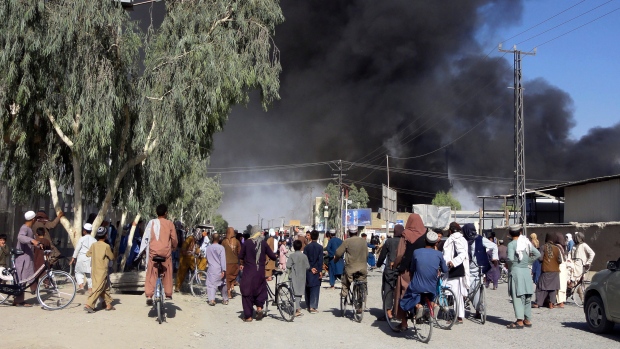The Taliban have seized four major cities in Afghanistan, Kandahar, Lashkar Gah, Herat, and Mazar-e-Sharif, as they advance towards the capital.

Photo Credit: Twitter via @rashidkhan
Just three weeks before the United States is set to withdraw its forces, city after city are falling to the Taliban. The insurgent’s control is quickly growing with the majority of the country’s some 400 distracts now in their grasp. A tragic time for Afghans’ who have suffered through generations of conflict with the fundamentalist Taliban.

Photo Credit: Long War Journal
With the capture of Afghanistan’s second-largest city, Kandahar, as well as the capital of the largest province in Afghanistan, Lashkar Gah, the Taliban effectively control the south. Kandahar in particular is a significant siege because it’s where the Taliban first emerged in 1994. This is a symbolic takeover as it signifies their impending return to power.
Although, Kandahar isn’t just symbolically important but also strategically because of its international airport, its agricultural and industrial significance, and its position as the economic center of southern Afghanistan.
Herat is the third-largest city and a culturally and economically significant region. Officials say the city fell to the Taliban on Thursday. During the siege, the Taliban broke into a prison freeing inmates who would most likely be keen on supporting the group’s return to power.
Mazar-e-Sharif is the fourth-largest city and heavily defended by two former warlords. The city is located in northern Afghanistan and fell on Saturday. The Taliban now control most of northern, western, and southern Afghanistan.

Photo Credit: Twitter via @HNajafizada
The Taliban are quickly moving to surround the country’s capital, Kabul, having seized 22 out of Afghanistan’s 34 provinces as of Saturday. Displaced civilians around the country are trying to find refuge in Kabul but could be faced with the Taliban’s impending attack on the capital.
Stephane Dujarric, spokesperson for the UN secretary-general said, “Urban warfare in Kabul would be catastrophic. The mission has pointed out the horrendous impact on civilians of urban warfare in Kandahar, in Lashkar Gah, in all of these cities”.

Photo Credit: The Globe and Mail
With all this devastation abroad it’s hard not to wonder how Canadian troops who fought in Afghanistan feel about the Taliban retaking the country. Over the span of 13 years, Canada sent more than 40,000 soldiers, 159 of which died and many more who suffer from PTSD.
Veteran Fabian Henry told the Globe and Mail, “I’ve lost so many friends to suicide I’ve stopped counting. How many lives were ruined by that war? How many people will never work again? How many people will never smile again, or come out of their basement again? That’s the cost – and that’s the stuff that’s unmeasurable.”
Another veteran, Tim Laidler, expressed his frustration surrounding the impending abolition of the infrastructure Canadian forces helped build and protect.
“It’s going to be an absolute humanitarian crisis,” said Laidler. “It just kind of feels like everyone is shrugging their shoulders and saying, ‘Well, we don’t have the stomach to fight anymore, so we’re just going to condemn these millions of people to this awful existence – and many to death’.”


